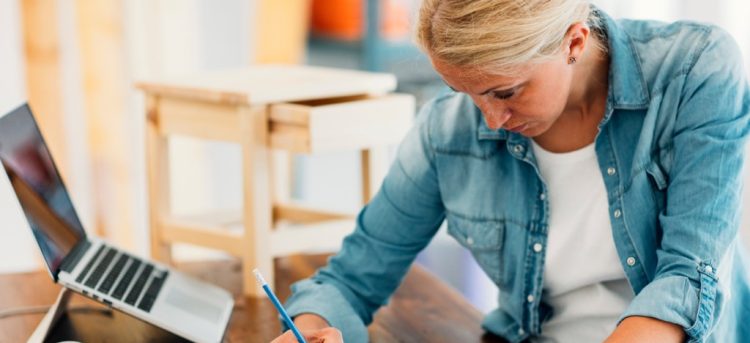- Launching a retail product is a great way to add revenue to your retail business, but you may need extra capital in order to do it successfully.
- Purchasing inventory, marketing materials and campaigns, and retail space are all considerations that cost money when adding a new product to your sales lineup.
- A retail product launch loan could help you cover the costs of launching a retail product.
How Do You Launch a New Retail Product?
A new product launch is an exciting event for any retailer. Whether you’re adding a new product to your existing line or launching a new retail product for the first time, there are specific steps you need to take to ensure success.
Research, research, research
The first and most important step is to do your market research to create a clear product launch strategy. If you want your new product to sell, you need to know the demographic you’re selling to. The demographic will help you refine everything from creative design of the product to what kind of messaging you use. You’ll also need to set a launch date and start your pre-launch work backwards from there, giving yourself enough time to really build out your go-to-market strategy.
Beyond knowing your target market of potential customers, you also need to know what your competitors are doing. Are there other versions of your product on the market already? What will set your product apart from others? What kind of visuals will you use to attract customers?
You’ll also need to know where you’re going to sell the product. Will you sell in-store or online in an ecommerce store, or both? Will you sell at your own retail store or with other retailers, such as Amazon? How much of your product will you need to keep on hand?
Create your marketing campaign
After researching, the next most important part of your product launch plan is marketing campaigns. A press release is a good start, but to get in front of your target audience, you need to include a wide range of traditional and digital marketing strategies. Social media is a great way to spread the word about your new product launch. Social media advertising and influencers can help grow your audience fast, but they’ll cost more than organic marketing. You should also make sure you have the right landing page built for your product to drive online sales.
Defining your customer journey — how you get them from first learning about your product to making a purchase — can help you determine how you need to market your product and where you should sell it.
Enlist partners
It’s also a good idea to find good partners who can help you get your product in the right place and keep the buzz going after your launch date. A successful product launch often takes more hands than you may think, and entrepreneurs of all types rely on experts to make sure they get their product launched properly.
How Much Money Do You Need to Launch a Product?
Most product launches cost between $20,000 and $500,000. How much money you need to launch a product depends on the type of product you’re selling, your existing customer base, and what markets you plan to sell to, as well as what competition is already in those markets. These factors can drive costs from as low as several thousand dollars to as high as several million.
Remember that launching your product includes everything from product design to marketing campaigns to manufacturing costs.
How Much Does It Cost to Develop a New Retail Product?
According to Pacific Research Laboratories, developing a new retail product usually costs somewhere between $10,000 and $30,000, depending on the product and which producer you choose to work with. They recommend separating development into three investment stages to help you manage cost:
1. Design planning
This includes determining what your goal is in selling the product, as well as how you’d describe it in an elevator pitch. You can also determine what materials you need to use. Enlist the help of experts early so you can make sure your plan includes everything you need.
2. Production
This is the step where understanding your target audience is most important. For instance, you can make a top-quality product, but if your customers don’t need it or can’t afford it, you won’t be able to sell it. In this step, you’ll also define how much of your product you want to produce initially, as well as how much it costs per-unit to make. Production may also be the most expensive step of your process, especially if you need specialized equipment.
3. Distribution
This step is your launch day, where you define where you’ll be sending your product, including what kind of shipping you’ll need to use. You can also use this time to determine if you want to add other products to your sales line in the future, and how your current production can inform your future ones. You should also have measurable metrics to help you determine what’s working (or not) with your sales post-launch so you can change where necessary. A coupon code can be a good way to find validation that your traditional marketing efforts are working.
Is Financing Available for New Product Development?
There are several ways to finance your new product development, but the most common methods are:
- Self-financing or bootstrapping
- Microloans
- Grants
- Crowdsourcing
- Angel investors or venture capital investors
Which type of financing you opt for will depend on your product. Angel investors and venture capitalists will be most interested in highly technical products (like software or services) that will bring them a bigger return on investment.
Entrepreneurs seeking a smaller amount of capital may have more luck with microloans, small business grants, or crowdfunding. You’ve probably seen lots of products on reward-based crowdfunding sites like Kickstarter, but there’s also equity crowdfunding to consider, where you give away a percentage of your business’s equity to stakeholders in return for investment funds. Grants are basically free money for your business to help you with launching your retail product.
If you’re already in business, you may consider small business loans, especially a retail business loan, to help you get the capital you need to launch a new product. Or you might consider business credit cards, which can help you open your cash flow to help you fund new ventures. A business line of credit can also help you get working capital to help you build your product line.
If you do opt for financing like loans, microloans, or business credit, it’s important to understand how your business credit will play a role in the types of financing you qualify for. Nav can help you learn how to establish business credit and help you determine which financing options are best for you. Log in to Nav see your options.
Why Undercapitalization Is the Worst Enemy of Retail Product Launch Success
According to the Harvard Business Review, most American families buy the same 150 items for their households. This means it’s notoriously difficult to get a new product to sell successfully to American families. But the number one reason a product will fail is because its designers and sellers didn’t properly plan and raise enough capital to support it.
A successful product launch takes money, period. Beyond the cost of a good website, marketing campaigns, product design, and development, manufacturing can get expensive fast. Being ready to scale up and produce more of your product once it’s successful is a fantastic way to retain current customers and gain new customers all in one go.
Make sure your research has properly informed your roadmap, including how much capital you’ll need to successfully launch your product.
Available Lenders for Retail Businesses Investing and Launching New Products
There are several lenders who may be able to help fund your new product launch:
The best way to determine what financing you’ll qualify for is to log in to Nav. We take details about your business — including your credit scores, time in business, and cash flow — to help find the retail financing you’re looking for.
This article was originally written on October 14, 2022.


Have at it! We'd love to hear from you and encourage a lively discussion among our users. Please help us keep our site clean and protect yourself. Refrain from posting overtly promotional content, and avoid disclosing personal information such as bank account or phone numbers.
Reviews Disclosure: The responses below are not provided or commissioned by the credit card, financing and service companies that appear on this site. Responses have not been reviewed, approved or otherwise endorsed by the credit card, financing and service companies and it is not their responsibility to ensure all posts and/or questions are answered.